The under-30s moving into VSCC historic racing
In a branch of motor sport where cars are at least 80 years old attracting young participants can be tough, but the VSCC’s under-30 group is growing. Paul Lawrence reveals how it’s being done
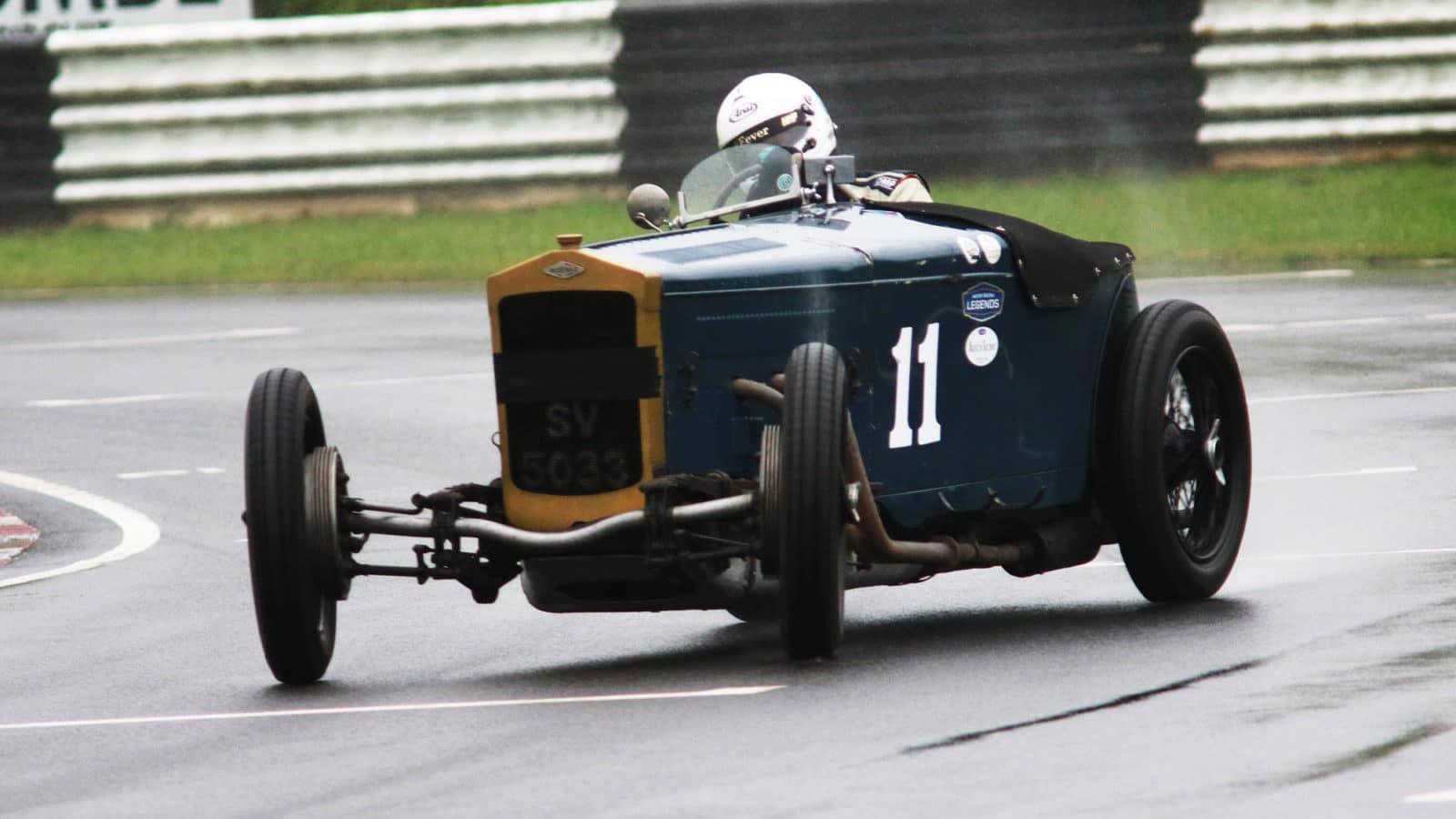
Sliding a Frazer Nash
In little more than two years the Vintage Sports-Car Club will celebrate its 90th birthday, having been formed in November 1934. Ever since then the club has been a bastion of motor sport for largely pre-war cars and continues to be a thriving and vibrant organisation running a wonderful array of sporting events.
Though most of the cars are at least 80 years old, and some as much as 110, the VSCC positively encourages their use in a wide range of events, from race meetings to speed events, auto tests, and the incredibly popular trials, when these venerable cars are launched up muddy tracks in the depths of winter.
Given the age of the cars, it would be easy to think that all the drivers will be from an older generation. But that is far from the case and the VSCC has worked very hard to build and develop a following among younger competitors. After all, any club that relies solely on a rapidly ageing demographic is heading for oblivion.
That’s certainly not the case in the VSCC, where a raft of younger drivers are now enjoying their motor sport. It is often said that a person’s interest in classic and historic cars is based around the cars they lusted after when they were in their youth. But for the younger drivers in the VSCC the cars they are now driving are the ones that their grandparents or even great-grandparents were watching in their era.
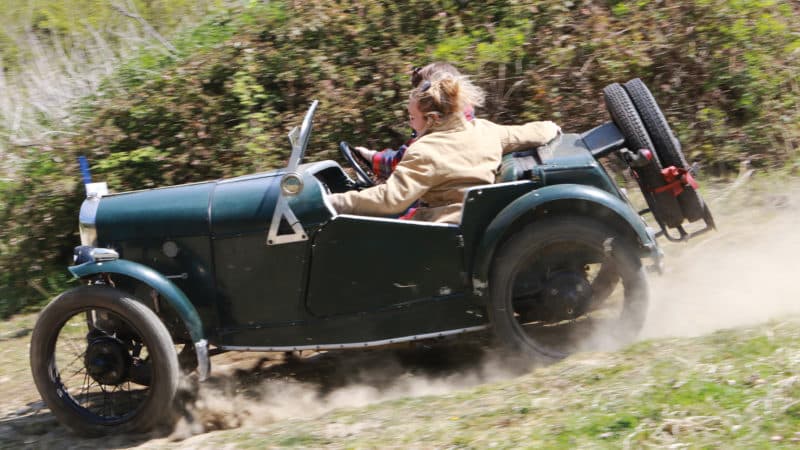
There’s a vibrant social side for the young in VSCC trials
The VSCC has taken a lead in making itself attractive to a younger audience and is ahead of just about any comparable organisation in the UK. Club secretary Tania Brown says: “We’ve been doing this for a decade and more and we’re seeing the dividends of that now.” From a total membership of over 5000, around 1000 are active competitors and up to 200 are in the 18-30 age group. “We’re bringing them into the governance of the club as well,” says Brown. “We have a young person on the main board as well as most sub-committees.”
We live in a world where modern cars are incredibly efficient and do much for us, leaving driving to become a pretty anodyne experience given the crowded roads that are all around us. So jumping in a pre-war car and having some motor sport fun is increasingly attractive to a generation that will derive little or no genuine pleasure from driving on the road.
Taking a humble Austin Seven and attacking a muddy hill or pushing an oversteering Frazer Nash sideways through a corner in a race becomes a visceral activity that has captured the imagination of many.
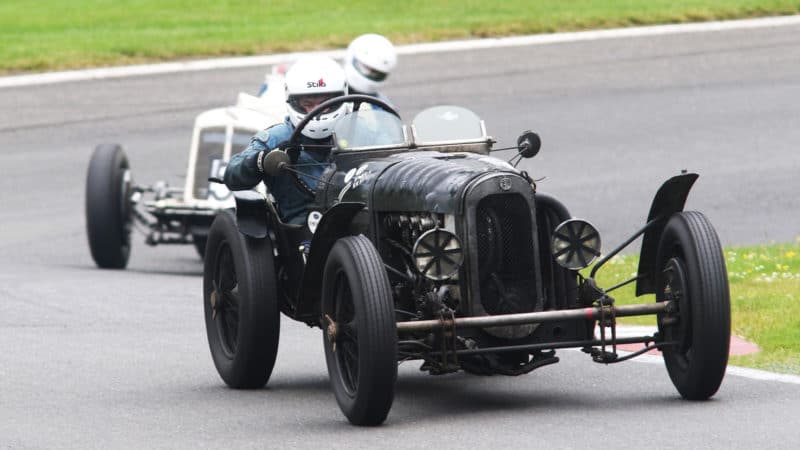
Ben Maeers comes from racing stock
Obviously, many of the younger VSCC competitors are part of a dynasty with historic and vintage cars and many youngsters are now taking over racing in the cars that their parents and even grandparents used to use.
On trials, where a four-seater car allows up to four people to take part in the event, family teams are commonplace and it’s not just a question of the youngsters sitting in the back doing the obligatory bouncing. Many of them are now driving while parents take to the back seats to be chauffeured around. The same applies in racing, where younger drivers are coming in and racing enthusiastically in cars that are family heirlooms.
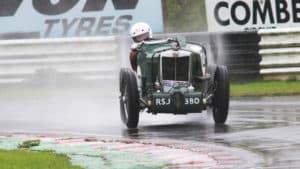
In its drive to bring on younger members, the VSCC is backing its pledges with hard cash as all members aged 18-30 get half-price membership and half-price entry fees to all competitive events. This makes a massive difference to the cost of competing and comes with a five-figure cost to the club. “It is a big commitment,” admits Brown.
One of the best initiatives has been the Under 30s races, which started at Cadwell Park in 2019 when 20 young drivers contested a handicap in a diverse range of pre-war cars, with victory going to the Frazer Nash Super Sport of Louis Parkin.
“There are a lot of quick drivers in Frazer Nashes, 10 to 15 good drivers”
The exercise was repeated at Mallory Park in summer 2021 when Harry Painter (MG PA) got to the line first in a field that included young women India Walker in an Austin Seven Special and Rebecca Smith in her 1929 Morris Minor. This year there will be two Under 30s races, one at Cadwell Park in April and one at Mallory Park in August.
Tom Waterfield, age 24, is a great example of young drivers emerging from the VSCC ranks. He is fortunate to have a big family background in the sport as his grandfather raced and his mum Jo Blakeney-Edwards is a very active competitor across the VSCC disciplines.
“I love the cars,” says Waterfield. “The people in the VSCC are fantastic. They are all quite eccentric. There are lots of quick drivers in Frazer Nashes, 10 to 15 good drivers, and we have the most amazing racing.” His young rivals include second-generation racers like Eddie Williams, Wilf Cawley and Ben Maeers. Back in 2020, Wilf made Frazer Nash history by competing in an all-Nash race against his father Dougal and grandfather Andy.
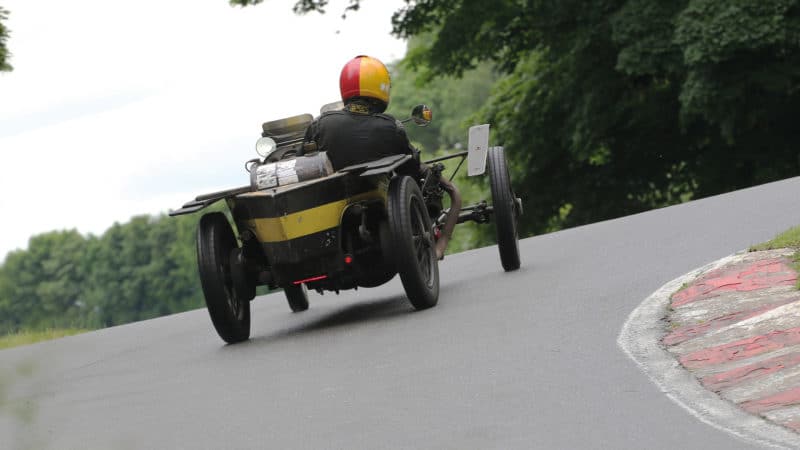
Hughie Walker in Thunderbug – another young driver with VSCC racing forebears
However, coming from a VSCC family is not a prerequisite for getting involved. Jim Edwards, still in his twenties, recently bought the famous ex-Basil Davenport GN Spider hillclimb car from David Leigh. Edwards had no family connection to the sport but went to watch a VSCC event and was hooked.
With so many young competitors active across VSCC events there is a great atmosphere among them, which bodes well for the future of this fine organisation and the wonderful cars that remain at its core. “The social side is quite important for young members,” says Brown.
Nowhere is the social side more obvious than on VSCC trials. While many are competing, another group are out marshalling and just about every VSCC trial now features a youth hill, which is managed and marshalled by young members. On some events, there will be two youth hills. It was an initiative that was started on the Lakeland Trial in 2013 and will be a decade old later this year. The club even puts a focus on young members if events are oversubscribed with the first priority given to entries from novices and young members.
It is hard to find any other UK motor club that has done so much to encourage younger members; ten years of effort and investment are really paying off for the VSCC.
